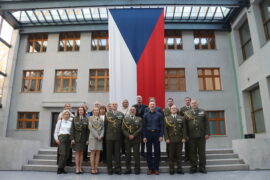
08 All-metal Wheellock Pistol, Augsburg, c. 1570
Fotogalerie
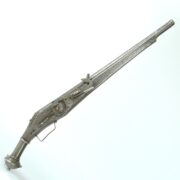


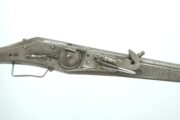
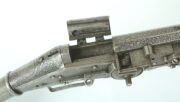
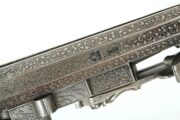
All-metal pistols were a common product of South German gunsmiths’ workshops in the 16th century, especially in Nuremberg and Augsburg. Their advantages over wooden-butt pistols included their lower risk of damage to the pistol (breaking the butt), and their weight was not too heavy because the iron handle was hollow. The surface of the butt was usually decorated with etching; the pistol that we can see here contains floral ornaments and figural motifs.
The breech-loader with a left hinged breech allowed for easier and faster loading. The hinge-mounted slide opened (popped open) when the pin (missing here) on the back of the bottom bolt was pushed backwards. An iron cylindrical cartridge could then be placed into the barrel into which the powder had been pre-loaded and the bullet inserted. The shooter could have a larger number of cartridges prepared in this way and by changing them after each shot, he increased the rate of fire. A pin protruding from the cartridge case ensured the correct position of the cartridge case in the barrel and facilitated the removal of the cartridge case from the barrel after firing. The earliest weapons employing this system date back to the first half of the 16th century.
Length 710 mm, barrel length 460 mm, 12.5 mm calibre, weight 2,360 g.
Aktuálně
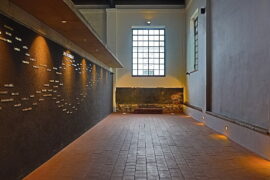
Přijďte na komentované prohlídky jízdárny ruzyňských kasáren 17. 11. 2025

Čeští a slovenští studenti vzdali v Armádním muzeu Žižkov poctu Josefu Čapkovi

Poděkujte válečným veteránům. Vlčí mák České republiky jim můžete věnovat i v digitální podobě
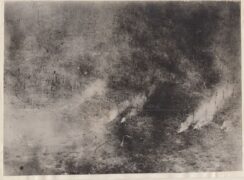
Pohled z nebe do pekla
